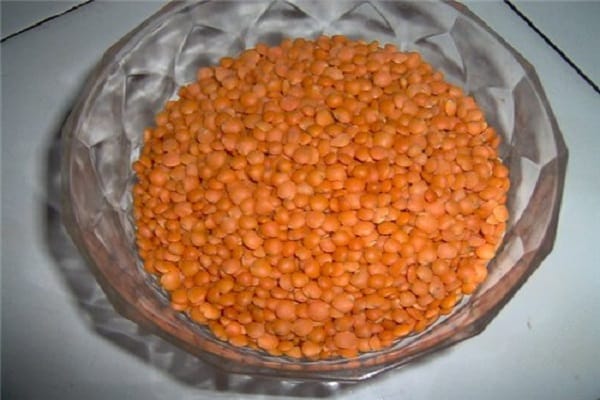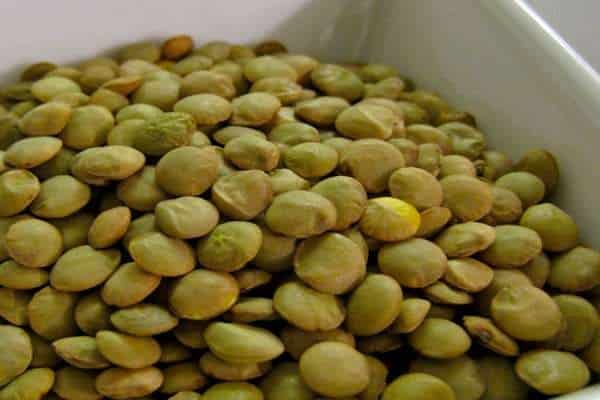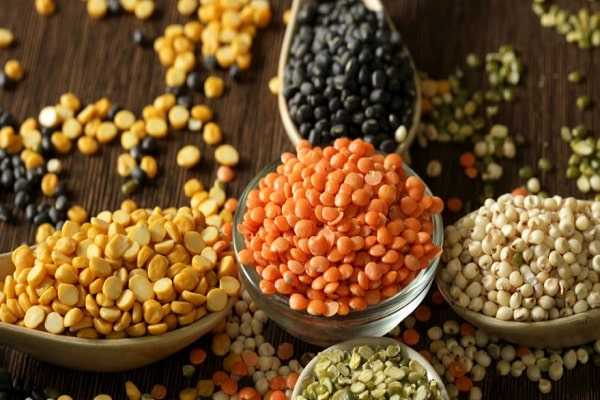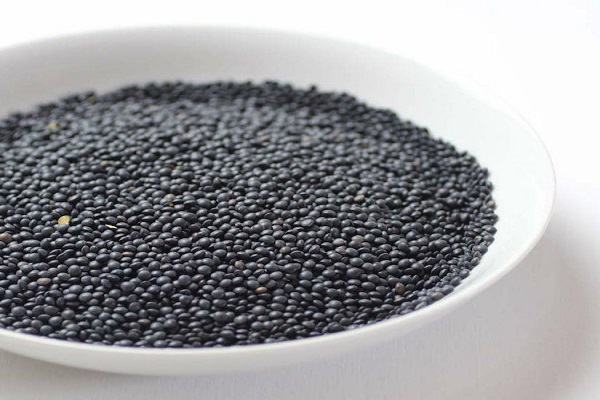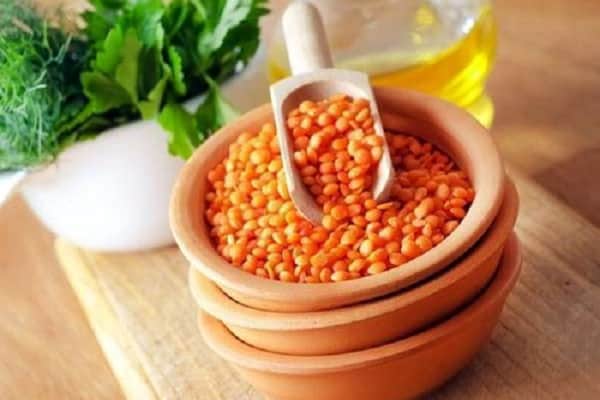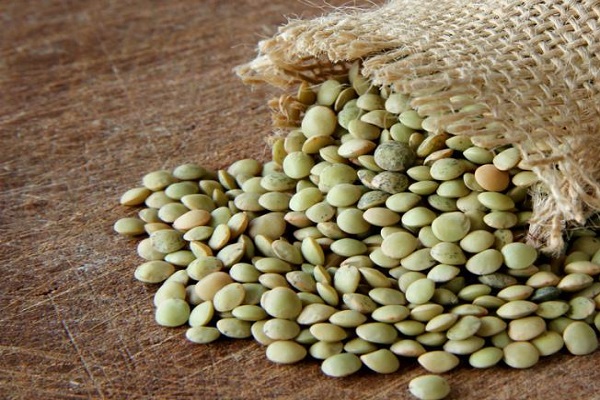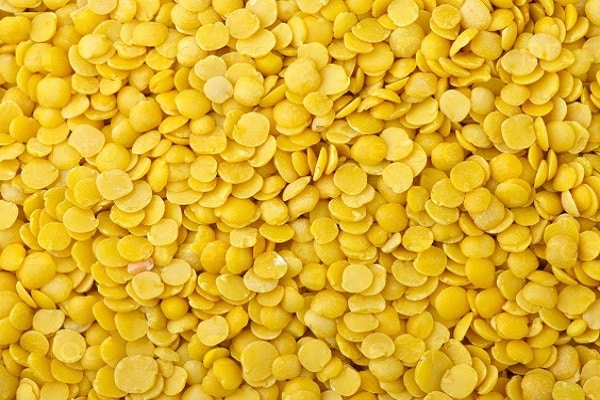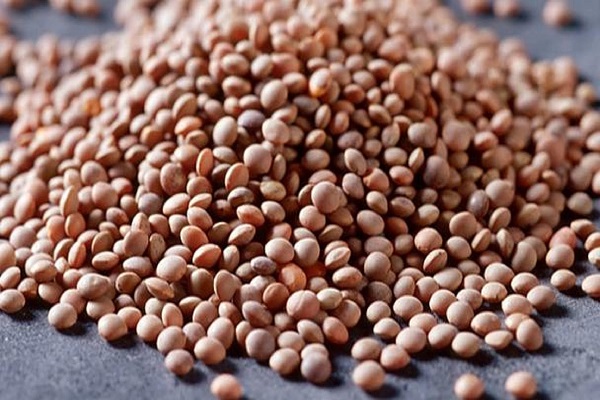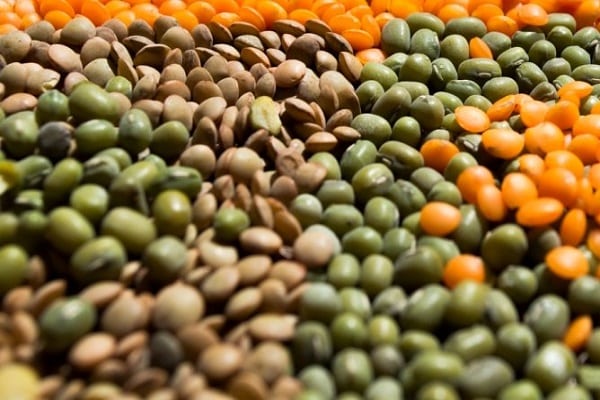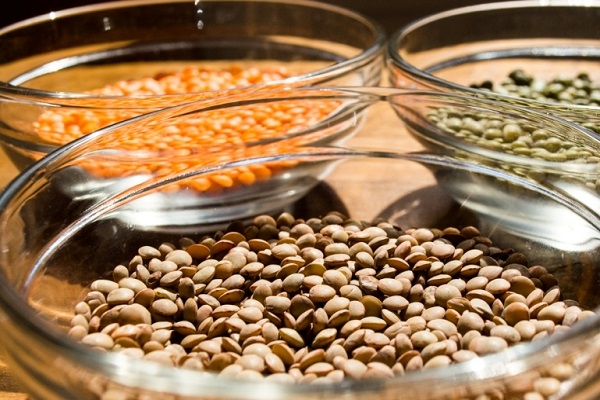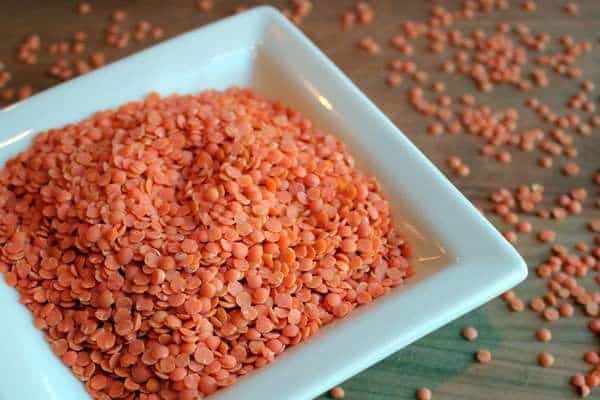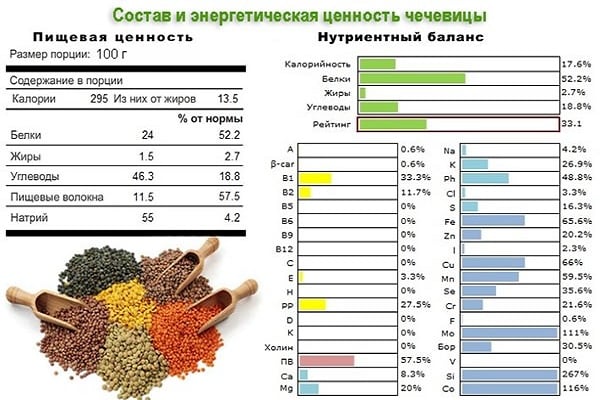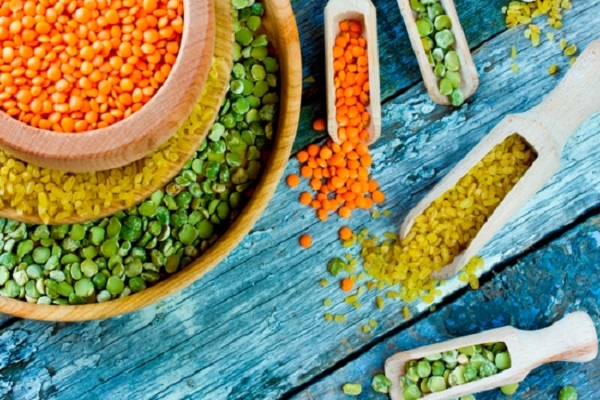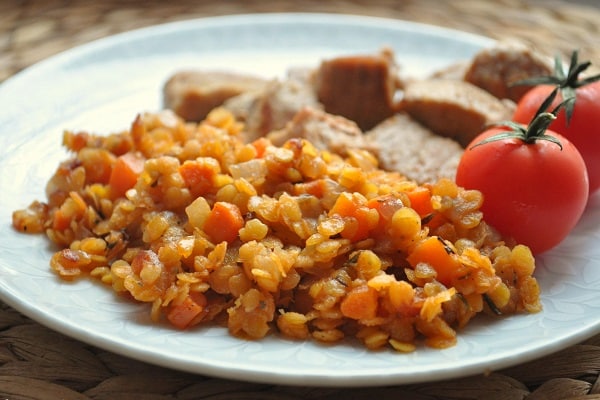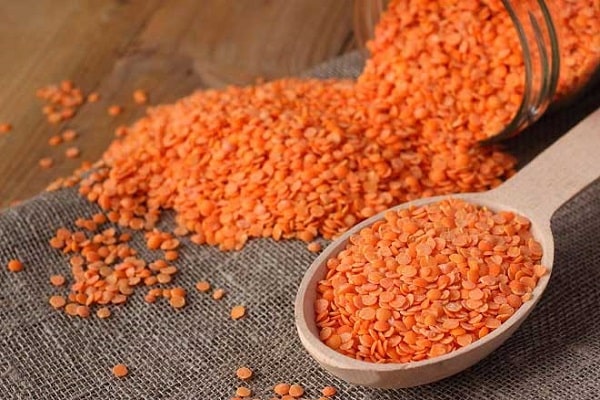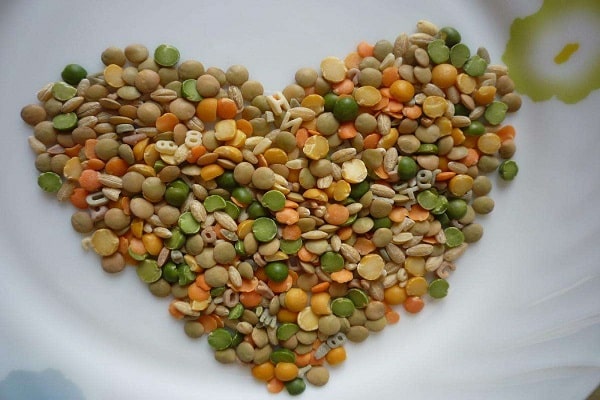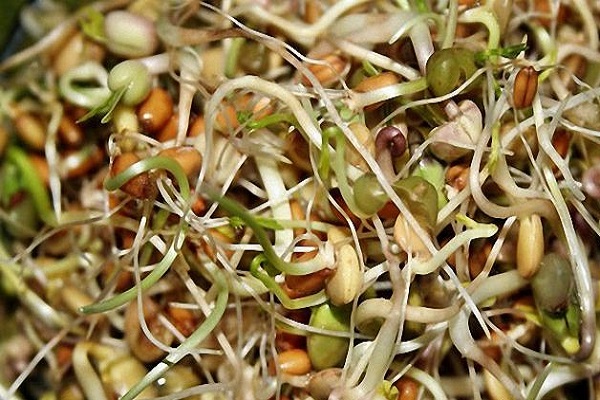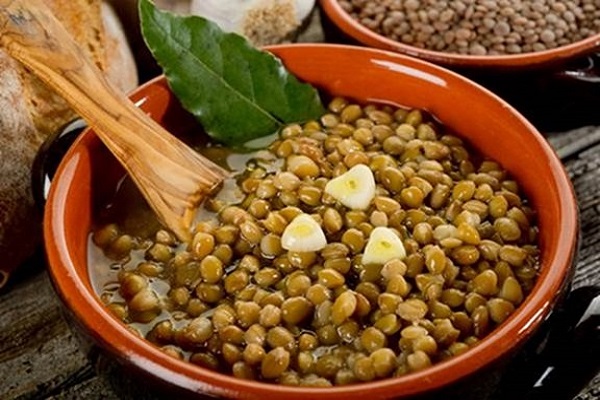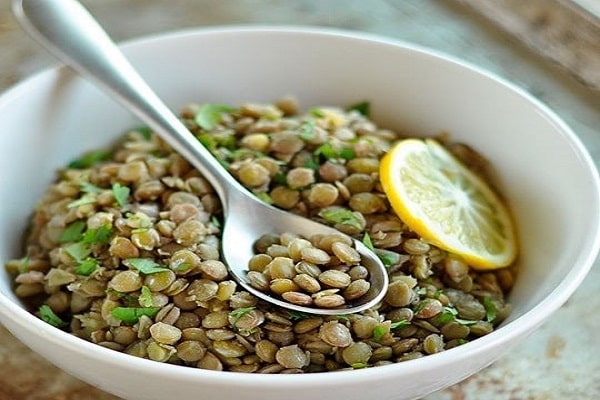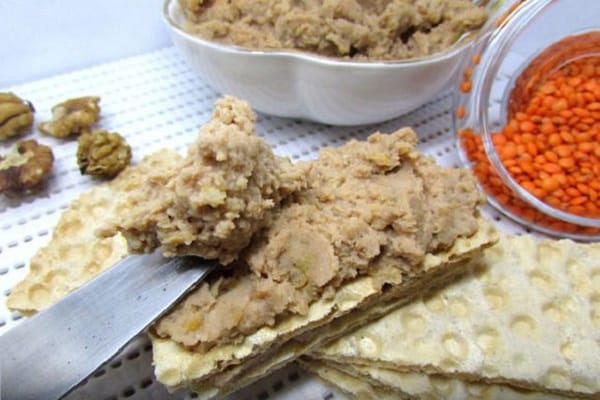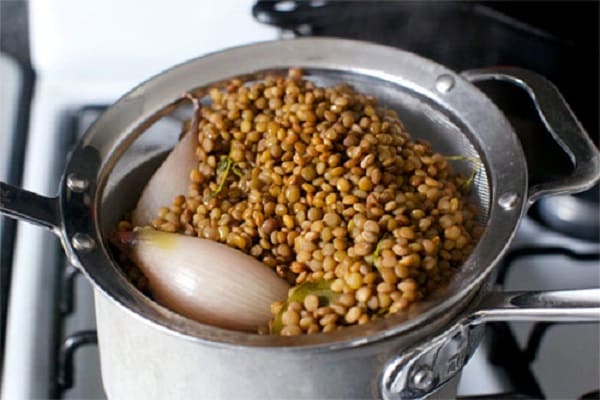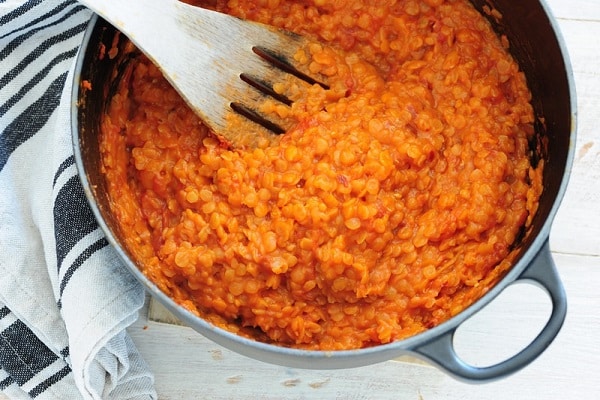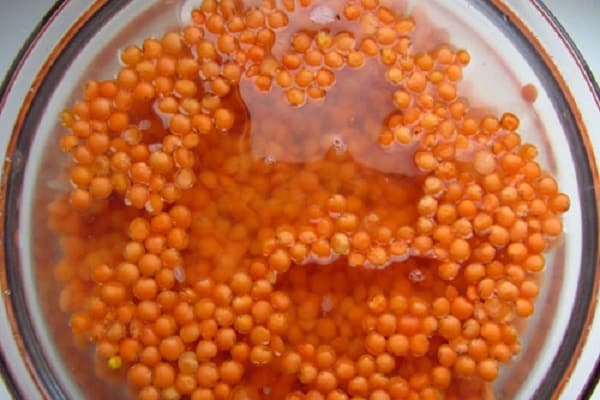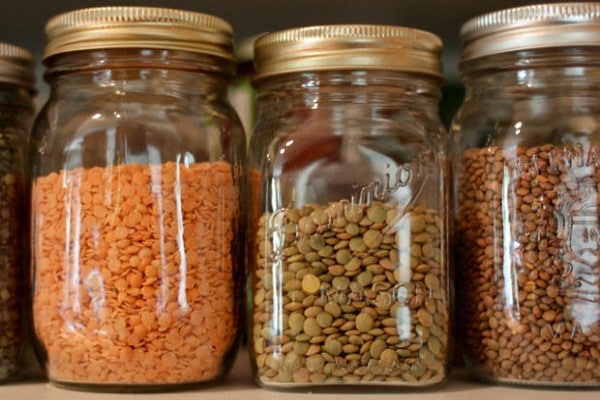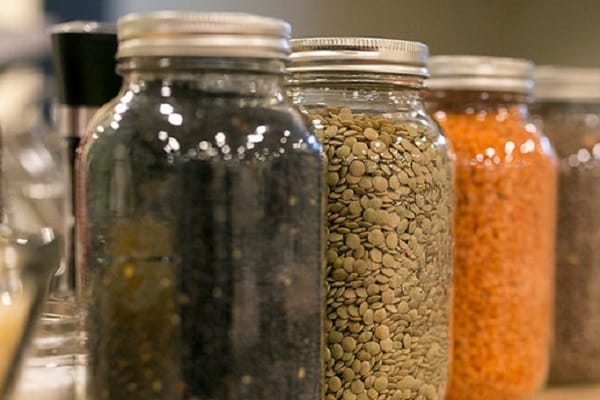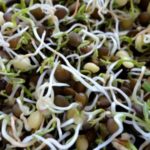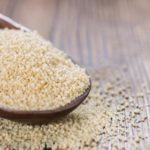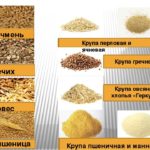Undeservedly forgotten and displaced by other legumes, lentils are returning to our menu. It contains a large number of useful substances. This is an indispensable ingredient in dishes of both European and Asian cuisine.
Another advantage of lentil grains is that they do not accumulate toxins, pesticides, nitrates and nitrites.Let's try to figure out what lentils are, what they come in, its advantages and disadvantages.
Classification and description
Lentils are a plant from the legume family. Only one variety is grown in culture - food. This is an annual herbaceous plant that forms small bushes from 30 to 75 cm in height. Complex, oval-shaped, pair-pinnate leaves are located on short petioles.
Lentils bloom with small flowers collected in racemes. The buds are moth-shaped and are white, pink, and purple. After flowering, a small fruit is formed - a drooping diamond-shaped bean. It may contain from 1 to 3 seeds of a flattened shape with sharp edges. The color and size of the grains depends on the variety and variety of the plant.
The leader in lentil production in Russia is the Volga Federal District, in particular the Saratov Region.
Types of Lentils
Lentil types are differentiated by seed color and size. Nowadays green, red and specific varieties are grown. Specific types include black, brown and French green lentils. Based on grain size, there are 2 types of crops: large-seeded and small-seeded.
Each variety has its own varieties. The most popular lentil varieties in Russia are: Anfiya, Oktava, Belotserkovskaya-24, Dnepropetrovskaya-3, Novaya Luna, Petrovskaya-4/105, Tallinskaya-6, Penzenskaya-14, Petrovskaya Yubileynaya. All of them belong to the green plate variety of culture.
Black lentils
This is the most popular and expensive variety of grains. It is called Beluga because of its external resemblance to black caviar. The fruit of black lentil varieties is small (only 2-3 mm in diameter), glossy. The variety was developed in Canada, but it is especially popular in India. Distinguish lentils can be distinguished by the color of the flowers (what it looks like is in the photo).
Black grains contain the most proteins - 35%. Their color is due to the presence of a special pigment that has antioxidant properties.
Red lentils
The red-fruited crop is widespread in Asian countries. It is called pink or Egyptian. The grains are free from the shell, so it boils quickly and strongly.
In most cases, the red variety is represented by small-seeded varieties.
Green lentils
In our country, plate-type green lentils are mainly grown. It got its name due to the large size of its flat, plate-shaped seeds. Most varieties of the green variety are large-seeded.
The grains of the plate cereal varieties have a high level of protein - up to 31%. The most popular green lentil is the French de Puy. Green varieties can be all shades of green, from pale olive to bright green.
Yellow lentils
This variety includes such types as large Mexican Macachiados, which are characterized by a bright nutty taste, yellow with a red core, and yellow scaly Red Chief.
Yellow lentils are formed from green grains after removing their shells. Varieties such as Eston, Richli, and Laird are suitable for this.
The yellow grains are especially popular in India, where they are used to prepare the traditional dish sambhar. They are produced in Europe, America and other Asian countries. The yellow variety has the highest glycemic index at 30 units.
Brown lentils
Brown lentils are the most common type of product. A popular variety of brown grain is the Variegated (Pardina) lentil variety. This is a Spanish variety. It has a thin shell and dense consistency, and practically does not boil over.
This is the only variety that requires soaking before cooking.
Beneficial properties of lentils
Edible lentils contain 25-31% complete protein, which includes 21 amino acids, including 12 essential ones (threonine, arginine, tryptophan and others). Lentil protein is close in composition to animal protein and is easily digestible, which is especially important for vegetarians.
Rich lentil grains with vitamins and minerals, antioxidants and other biologically active substances. Due to its chemical composition, lentils have the following beneficial properties:
- Carbohydrates in lentils are slow, so products and recipes with them are recommended for inclusion in diets for weight loss and sports nutrition. In addition, cereal stimulates metabolic processes in the body.
- The grains contain a large amount of insoluble dietary fiber, which normalizes digestion and improves peristalsis and intestinal microflora. They bind toxins and promote their elimination, regulate cholesterol and glucose levels in the body. Soluble fiber is transformed into a jelly-like mass, which helps maintain a feeling of fullness for a long time.
- Due to its low glycemic index, cereal helps lower blood sugar levels. Therefore, products and recipes with lentils are recommended for diabetics.
- Lentils stimulate the immune system and prevent the development of cancer.
- Amino acids are involved in metabolism, hematopoiesis, and immune response. Tryptophan takes part in the synthesis of the happiness hormone - serotonin, improves brain and nerve function. Threonine prevents fatty liver degeneration. Leucine is important for the health of bone and muscle tissue and skin. It is involved in the synthesis of growth hormone.Methionine is a strong antioxidant and stimulator of fat metabolism.
- The rich mineral composition of lentils has a positive effect on the entire body. Manganese is a powerful antioxidant. Magnesium activates some enzymes and accelerates tissue regeneration, improves the quality of blood circulation, and promotes oxygen saturation in the blood. Potassium normalizes the functioning of the cardiovascular system and hematopoiesis, regulates acid-base balance. The grains contain calcium, phosphorus, fluorine, copper, iodine, zinc, selenium, etc. 100 g of lentils contain a daily dose of molybdenum, which is involved in the metabolism of purines.
Iron
Lentil grains are a reliable source of iron, necessary for normal hematopoiesis and the prevention of iron-dependent anemia, which is especially important for vegetarians, children and pregnant women.
100 g of product contains 7.6 mg of iron. To improve iron absorption, grains should be consumed with vegetables and herbs.
Vitamins
Lentil cereals contain the following vitamins:
- Thiamine (B1). Takes part in the synthesis of nucleic acids and proteins, regenerative processes. Stimulates the functioning of the nervous and cardiovascular systems, adrenal glands.
- Riboflavin (B2) is a regulator of intracellular metabolism, general metabolism and glycogen synthesis in the liver, a central nervous system stimulant. Normalizes the tone of blood vessels, the number of leukocytes, and the functioning of the gastrointestinal tract. Improves skin and vision condition, reduces the risk of cancer.
- Folic acid is especially necessary for children and pregnant women. It is needed for normal bone marrow development. Prevents the development of neural abnormalities in utero development. Prevents the spread of tumor processes and radiation sickness. A serving of lentils contains your daily dose of vitamin B9.
- Nicotinic acid (NA) is a participant in all types of metabolism, a stimulator of hematopoiesis, the formation of leukocytes and prothrombin. PP increases performance and reduces cholesterol levels in the blood.
- Vikasol (K) is a regulator of blood clotting, its composition and condition, vascular permeability and elasticity.
- Tocopherol (E) is an antioxidant, necessary for the prevention of vascular sclerosis and muscle dystrophy, regulation of hematopoiesis and reproductive functions, the functioning of the nervous and cardiovascular systems, and metabolic processes.
- Carotenoids are stimulants of redox reactions. They influence the level of glucose and cholesterol in the blood and trigger regenerative processes in tissues.
Phytoestrogens
Lentil grains contain phytoestrogens that mimic the female sex hormone estrogen. These substances ease the course of menopause, prevent the development of tumor processes, endometriosis, uterine fibrosis and other pathologies in the female body.
Phytoestrogens have a gentler effect on the body than synthetic hormone substitutes and have fewer side effects. Isoflavones are not destroyed during cooking. Orange lentils are especially rich in these substances.
Calorie content of lentils
The culture is a low-calorie, low-fat product. The average calorie content of dry grain is 260-360 kcal, and cooked grain - 116-175 kcal.
The product contains fiber in soluble and insoluble form and protein, which give a feeling of fullness, so less grain is needed for cooking. Thanks to this, cereals are often included in diet menus for weight loss.
100 g of grains contain 21-31 g of protein, only 1.2-2 g of fat and 42-58 g of slow carbohydrates. The least amount of fat is found in red varieties of the plant.
Harm and contraindications of lentils
From grains you can prepare various dietary dishes suitable for therapeutic nutrition. But at the same time, the product has a number of contraindications for use.
Legumes stimulate increased gas formation, therefore they are not suitable for people suffering from diseases of the gastrointestinal tract such as dysbiosis, enterocolitis, biliary dyskinesia, cholelithiasis, gastritis. A contraindication for eating cereal is hemorrhoids.
Due to the fact that cereal contains natural purines, it should not be consumed by patients with gout, arthritis and arthrosis.
Long-term consumption of products made from lentil grains, containing about 30% protein, can lead to impaired kidney function, the development of nephritis or urolithiasis. The oxalates contained in cereals also contribute to this.
To reduce the negative impact of cereals on the gastrointestinal tract, you can cook it after pre-soaking it for 4-6 hours. Vegetables, herbs, and green tea will help reduce the negative impact of cereals on digestion.
Lentil grains reduce the level of absorption of calcium, iron, and zinc.
Children whose enzymatic system is still imperfect, and older people need to limit their consumption of the culture. It is acceptable to include it in the diet 3 times a week.
Signs of legume poisoning: vomiting, headache, yellowing of the skin, brown urine.
Use in cooking
There are small-seeded and large-seeded or plate crops. The latter is represented by seeds 5-9 mm in size in various shades of green. All other varieties (red, black, brown and others) are mainly small-seeded lentils.
It is believed that bowl grains have better taste and higher nutritional value, but each variety has its own merits.
Brown lentils have a distinct nutty aroma and spicy flavor. It is suitable for making soups. It can be added to salad, casserole, stew. This variety does not cook well.
Yellow cereal has a neutral taste. It boils quickly and is used for stews, puree soups, pates, and cereals.
Green cereals can have both a nutty and mushroom flavor. It retains its shape well when cooked and is used in salads and as a side dish for meat and fish dishes.
The red or orange grain has a savory, sweet flavor and is widely used in Asian cuisine.
Black lentils have a strong taste. Its unusual color fades a little when cooked. The variety goes well with vegetables, meat, fish and spices, and spicy tomato sauce.
Cereals can be used to prepare pates, cutlets, meatballs, and medallions. A drink reminiscent of coffee is made from lentils. Lentil flour is used for baking (bread, pancakes, pies) and protein shakes.
How to boil lentils
Cooking time legumes depends on the variety and colors. So, green varieties are cooked for 25 to 40 minutes, brown varieties - 30-35 minutes, red and orange - no more than 20-30 minutes.
As a result of cooking, the grains increase in volume by 3 times. Red varieties hold their shape better. Lentils can be cooked round or split. The chopped one is used to make soups. It cooks for only 10-15 minutes.
In order to boil lentils for a side dish, you will first have to sort and wash them.Unlike other legumes, only the grains intended for soup are soaked to speed up their cooking and avoid overcooking other vegetables.
Pour cold water over the cereal at a ratio of 1:2 and bring to a boil. At this stage, you can add 1 tbsp to the pan. l. olive or other vegetable oil. The grains should simmer gently under the lid ajar for the required time. Just before the end of cooking, add salt to taste.
You can also cook grain in a slow cooker using the “Stew”, “Porridge” or “Grain” modes.
Red varieties can be cooked in the microwave. For this, 0.5 tbsp. pour hot water so that it covers the grains, salt to taste and place in the microwave oven on the “Vegetables” mode or simply on the most powerful mode for 7-10 minutes.
Lentils go well with rosemary, bay leaf, sage, pepper, and soy sauce.
How to store lentils
Lentil seeds can be stored for quite a long time. Over time, they dry out, darken and become harder. Then you have to cook them longer, but this does not affect the nutritional value.
The optimal shelf life is 10-12 months. Lentil grains turn pale when stored in light, so it is better to keep them in a dark place or in opaque containers or dark glass jars. A fabric bag or cardboard box is suitable for grains. In sealed containers and plastic bags, if legumes are stored with a humidity above 14%, condensation may form.
Store grain in a cool, dry place with good ventilation. In a damp room, legumes will become covered with plaque, may begin to rot, oxidize, and acquire an unpleasant odor. The same thing happens in a well-heated room or near heat sources.
Cooked lentil grains can be stored in an airtight container in the refrigerator for 5 days. Boiled grain can be stored in the freezer for 6 months. At the same time, the nutritional value will decrease and the consistency will change, but the taste will remain the same.

